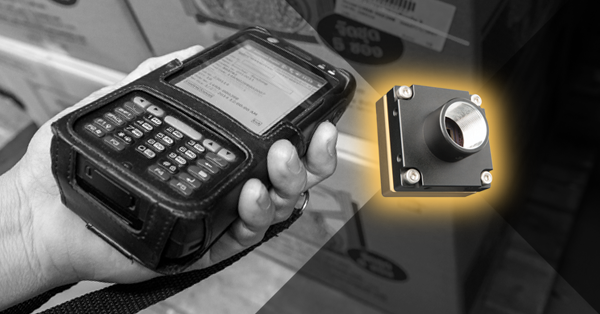How do I increase the dynamic range of my camera?
Last Revision Date: 2/10/2016
For the sake of this article, dynamic range is defined as the difference between the maximum and minimum amounts of light that a sensor can measure. This is bounded on the upper end by the sensor’s full well depth (the maximum charge, measured in electrons, that any pixel can contain) and at the lower end by the camera’s read noise. It is measured in a number of different ways, but one simple method is to examine the number of different levels of grey that can be distinguished. The greater the dynamic range of a camera, the more grey levels that will be distinguishable in the resulting image.
A common way to measure dynamic range is to present the camera with an image of a target that is completely black on one half and the other half completely saturates the sensor. A series of neutral density filters that reduce the target image transmission by 50% are placed between the target and the camera. The number of filters required to make the dark portion of the target indistinguishable from the light portion indicates the number of bits of dynamic range of the camera.
Improving a Camera's Dynamic Range
As a camera's dynamic range is bounded on one side by the sensor's full well depth and on the other by the read noise, there are only a few things that a user can do to improve the camera's true dynamic range.
-
- Adjust camera parameters to increase dynamic range (brightness and gain). The brightness setting or black level of the camera is effectively the minimum value that any pixel will return. Minimizing the brightness level maximizes the number of levels of intensity available to the sensor to represent the incoming light and thus helps increase dynamic range. In addition to raising the pixel intensities, increasing the camera's gain raises the read noise level. Thus, using the minimal amount of gain that will still allow the A/D to saturate will help maximize the camera's dynamic range.
- Adjusting gamma to improve perceived dynamic range. Cameras that implement gamma functionality allow the user to apply a non-linear response curve. Although changing the gamma does not change the camera's dynamic range, it does change the way the full range of bits is mapped down to 8bpp. This allows the user to map pixels, either near saturation or with very little signal, non-linearly across the grey levels. This changes the user’s perception of the camera’s dynamic range and allows them to see more details in both the brightest and darkest parts of the image. Experience indicates that this is more effective in the darker portions of the image than in the lighter portions. When adjusting the gamma, a user may notice a grayish film in the resulting image (i.e. image appears washed out). This is generally a result of the gamma being set too high.
- Adjusting bits per pixel to improve perceived dynamic range. Many cameras support video modes that provide greater than 8 bits per pixel. While the video mode is generally labeled as 16 bits per pixel (Y16), these images usually have between 9 and 12 bits of useful data. Although using these higher bit depth images does not improve the actual dynamic range, they do provide more resolution across the entire image. This can be useful in cases where users would like to apply custom 'gamma' algorithms.
- Filtering the light hitting the sensor. If the camera is black and white, you can add an IR filter, similar to those shipped with color cameras. Refer to Section 2.4 of the Dragonfly Technical Reference for information about the IR filter included with color versions of the camera. Customers have also had success with a polarization filter.
- Increasing the ambient lighting of the scene. Removing spot lighting and increasing the ambient lighting of the scene will reduce specularities and other saturated portions of the image, allow for the most image detail possible.
- Adjust camera parameters to increase dynamic range (brightness and gain). The brightness setting or black level of the camera is effectively the minimum value that any pixel will return. Minimizing the brightness level maximizes the number of levels of intensity available to the sensor to represent the incoming light and thus helps increase dynamic range. In addition to raising the pixel intensities, increasing the camera's gain raises the read noise level. Thus, using the minimal amount of gain that will still allow the A/D to saturate will help maximize the camera's dynamic range.


